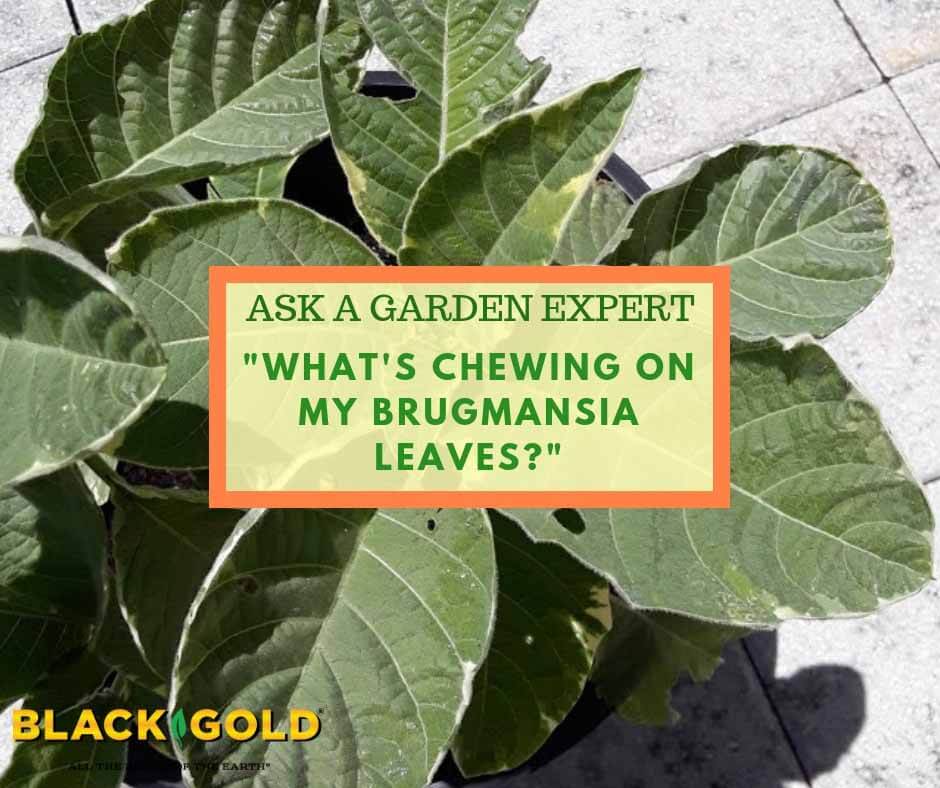
“I have a Brugmansia, and something is eating at the leaves. I have tried soapy water with oil, and I have tried broad-spectrum herbicides. Please Help!” Question from Lizzy of Ocala, Florida
Answer: Your pictures came through! The damage is caused by chewing pests and there are several that will attack Brugmansia. Cabbage moth caterpillars (cabbage loopers), snails, and slugs will all chew on Brugmansia. Tomato hornworms will too, but this looks more like slug or cabbage looper damage.
Cabbage Looper Inspection and Management
Start by checking the plants from top to bottom for little green caterpillars. If you find them, these are cabbage loopers. You might also see little white moths flittering around your plants. These are cabbage looper moths. The easiest way to get rid of loopers is to simply remove them by hand and put them in soapy water. If you find loopers, also check for clusters of small, round, yellowish eggs on the bottom of leaves. These are looper eggs and must be scraped off. To further manage loopers, you can sprinkle the plants with BT, which is approved for organic gardening and only harms the caterpillars chewing on your plants.
Slug or Snail Inspection and Management
Slugs or snails like to hang out beneath or just below the soil line of pots, so this is the first place to check for them. They come out at night to do their damage. There are several organic ways to keep them away from your Brugmansia. I would purchase some diatomaceous earth and sprinkle it liberally on the surface of your potting soil. To us, it feels like coarse sand, but to slugs, it is very damaging. It cuts their soft exteriors and keeps them away. You could also apply a thick layer of perlite on the top of your potting soil. Slugs don’t like it either.
Brugmansias grow so quickly that pretty soon a little chewing damage won’t do them any harm. In fact, I would upgrade your plant in a larger pot as soon as it bursts forth. In just a few months a plant can grow as much as three feet and eventually reach huge proportions (15-feet or more unless yours is a dwarf variety). I recommend planting in Black Gold® Moisture Supreme Container Mix. Also be sure to add extra flower fertilizer because they are really heavy feeders.
I hope these tips help. Happy gardening!
Jessie Keith
Black Gold Horticulturist

